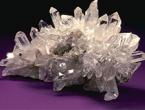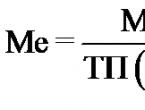Histidine structural formula. Histidine structural chemical formula. Useful properties of histidine
Histidine or l histidine is one of the non-essential amino acids that is part of many enzymes. Its main property is that it helps the growth and regeneration of tissues. Histidine is produced during the production of histamine, is found in many foods, and is needed to treat many conditions such as rheumatoid arthritis, anemia, or ulcers. It is found in significant concentration in hemoglobin. The lack of this amino acid can cause serious consequences.
Functions
Histidine can be found in the myelin sheaths that cover nerve cells. It plays an important role in protecting the body from infections. This amino acid not only improves immunity, but also resists radiation.
Histidine or l histidine is one of the non-essential amino acids
No less important is the fact that it helps to remove salts of heavy metals from the body. Histamine promotes a more intense blood flow to the internal organs. This also increases sex drive.
Without this important amino acid, the body is defenseless and unable to resist stress and depression. Amino acid gives resistance to adverse external conditions of the nervous system and the body as a whole.
Histidine is often used in the treatment of gastric and duodenal ulcers. It reduces pain, heals affected tissues and stops bleeding. Histidine is also effective in the treatment of parenchymal hepatitis.
Amino acid is actively used in the treatment of immunodeficiency virus. Its deficiency is known to lead to serious hearing problems.

Histidine is often used in the treatment of stomach ulcers.
Effect on the body
Since histidine is part of many active enzymes, it affects the functions and condition:
- liver,
- Gastrointestinal tract,
- Adrenal,
- nervous system,
- Musculoskeletal tissue.
Due to specific features, this amino acid is involved in the production of:
- carnosine,
- Listamina,
- Anzerina.

Histidine is involved in the production of hemoglobin
Its use helps in the treatment of the following diseases and the elimination of problems such as:
- allergic reactions,
- Stress and depression
- Rheumatoid arthritis,
- Ulcer of the stomach and duodenum,
- Anemia,
- Gastritis,
- Atherosclerosis,
- Uremia,
- Hepatitis,
- reduced immunity,
It is also used in a set of procedures aimed at restoring a person after severe injuries and illnesses.

The amino acid histidine helps in the treatment of hepatitis
Deficiency and Excess
A person needs at least 2 grams of the substance per day. If the amount of this important amino acid is insufficient, that is, significantly less than the established norm, then irreversible changes can occur in the organs.
An amino acid deficiency can cause muscle pain and inflammation. A person's hearing may be impaired or completely lost. In both sexes, sexual desire is significantly reduced.
However, not only the lack of histidine can be dangerous. Its excess is also harmful. If the amino acid is present in the body in excess, it can cause problems with the nervous system.
An excess of it can suppress the activity of neurons. As a result, the person becomes irritable and agitated. Ultimately, this can lead to neurosis.
Those who suffer from manic-depressive psychosis should not additionally use histidine preparations at all. The amount of the substance that is contained in regularly consumed products is enough.
Include foods rich in histidine in your diet is a must. After all, the human body can produce this amino acid only partially. Avoiding its deficiency is easy if you eat enough cereals. What other products contain it?
main sources
L histidine is found in many foods. Most of it is in:
- lentils,
- Peanut,

L histidine is found in peanuts
- salmon,
- tuna,
- Soy beans.
What foods contain this amino acid other than the ones listed above? A sufficient amount of it is found in some vegetables and fruits:
- beets,
- cucumbers,
- spinach,

L histidine is found in spinach
- radish,
- garlic,
- pineapple,
- apples.
What plant foods contains histidine is very important for vegetarians to know, because they do not eat meat and fish.
The use of any foods that contain histidine supports the work of the gastrointestinal tract. It is especially useful for disorders associated with a decrease in the acidity of gastric juice.
(beta-imidazolyl-alpha-aminopropionic acid, C 6 H 9 N 3 O 2) is a heterocyclic amino acid with a predominance of basic properties, found in almost all proteins.
Structural formula:
In the blood and tissues of humans and animals, in plant organisms, it is in the composition of proteins, as well as in free form and in the form of some derivatives, ch. arr. peptides - carnosine (see) and anserine (see). Human plasma contains approx. 1.7 mg% G.; in rather large quantities (over 100 mg per day), G. is excreted in the urine (G.'s content in the blood and its excretion in the urine increase during pregnancy). Although the need for G.'s presence in human food has not been proven and it is referred to as non-essential amino acids, it cannot be replaced in the diet of rats, dogs, mice, chickens, and many other animals. Neurospora crassa and other mushrooms contain G.'s betaine - hercynin and its thiol derivative ergothioneine (see Betaines). These compounds are also found in the blood of humans and a number of animals, but apparently they are not synthesized in the animal body and enter it with food.

G. was first obtained by A. Kossel in 1896 from the hydrolyzate of sturgeon protamine - sturin, and in the same year by S. Hedin - from the hydrolyzate of casein. G. can also be obtained from hydrolysates of other proteins. A lot of G. contains globin (the protein part of hemoglobin), thanks to which blood serves as a rich source for G..
G. crystallizes in the form of colorless plates, we will well dissolve in water, it is bad - in alcohol, it is insoluble in ether and chloroform, t ° pl 277 ° (with decomposition). G.'s isoelectric point is at pH 7.6. Natural L-histidine, [a] 20 D -39.3, has a slightly bitter taste.
Histidine as a drug
Histidinum available in the form of histidine hydrochloride (Histidini hydrochloridum; synonym: Cloristin, Gerulcin, Herulcin, Histifan, Laristin, Laristidin, Stellidin, Ulcostidine). Let's well dissolve in water. Rapidly absorbed by any route of administration.
G. slightly increases secretory and motor function went. - kish. a path that, probably, is connected with education from G. of a histamine. G. reveals the properties of an adaptogen: at a high content in food, it reduces the negative effect on animals of high temperature, low atmospheric pressure, and ionizing radiation; at the same time, the activity of enzymes involved in the metabolism of G.
Apply G. for the treatment of hepatitis, hron, gastritis with high acidity, with peptic ulcer of the stomach and duodenum. Enter intramuscularly in 5 ml of 4% solution daily. The course of treatment is 20-30 injections, after which 5-6 injections are prescribed every 2-3 months. G. improves health, sleep, eliminates pain and dyspepsia; in a significant proportion of patients, regeneration of the gastric mucosa or scarring of the ulcer is observed. With parenchymal hepatitis, a similar course of treatment accelerates recovery, normalizes the pigment-, prothrombin-forming and synthetic functions of the liver faster. G. is used in complex antirheumatic treatment. In patients with atherosclerosis G. improves lipid metabolism. G.'s preparations usually do not have a side effect. Occasionally, there are rapidly passing weakness, pallor, pain in the epigastric region.
Release form: 5 ml ampoules of 4% solution; store in a place protected from light.
Bibliography Braunstein A. E. Biochemistry of amino acid metabolism, M., 1949, bibliogr.; Vizir A. D. The use of histidine in atherosclerosis, Vrach, case, No. 7, p. 129, 1964; Meister A. Biochemistry of amino acids, trans. from English, M., 1961; Mardashev G. R. Biochemical problems of medicine, p. 109, Moscow, 1975; Shelygina H. M. The effect of histidine on vascular permeability in rheumatism, Kazansk. honey. journal, no. 4, p. 19, 1968; In th qui st H. P. a. Tg u p i n J. S. Amino acid metabolism, Ann. Rev. Biochem., v. 35, p. 231, 1966, bibliogr.; Histidine, Meth. Enzymol., v. 17B, Sect. 1, p. 1, N. Y. - L., 1971; Meister A. Biochemistry of the amino acids, v. 1 - 2, N. Y. - L., 1965; Truff a-Bachi P. a. Cohen, G. N. Amino acid metabolism, Ann. Bev. Biochem., v. 42, p. 113, 1973, bibliogr.
I. B. Zbareky; I. V. Komissarov (farm.).
Each of us at least once in our lives thought about our diet. For example, what is the daily norm of various substances necessary for the body that comes to us with food? What amino acids do we need and why? Today, of course, we will not talk about proper nutrition in general, since one or even a dozen articles are not enough for this. Let's talk about only one substance, which is undoubtedly very important for the body. histidine. Its chemical name sounds complicated - L-2-amino-3-(1H-imidazol-4-yl) But first things first.
What is an amino acid?
Before discussing the properties of histidine and its role in the body, let's deal with the concept of "amino acid". Those who were fond of sports have heard about these substances. An amino acid is an organic compound that has two main functional groups that make it special: the amino group -NH 2 and the so-called carboxyl group -COOH.
The first is responsible for the main properties of this unusual class of compounds. Thanks to nitrogen and its pair of electrons, an amino acid can form positively charged ions. In this case, the amino group turns into such an ion: -NH 3 +.
The second functional group is responsible for It is able to donate a proton, turning into an anion -COO -. This phenomenon makes it possible to form salts from the side of the carboxyl group.
Thus, an amino acid has two parts, each of which is capable of forming salts. One of them provides these compounds with the properties of acids, and the other - of bases. In general, an amino acid can be represented as follows: NH 2 -CH (R) -COOH. The letter R here should be understood as a "radical", that is, any organic particle consisting of functional groups and a carbon skeleton and capable of forming a bond (or bonds) with the backbone of an amino acid molecule.
As a rule, even those who are not familiar with pharmacology and were not fond of sports have heard at least once, at least from advertising, that we need amino acids and are very useful. Let's see what functions they perform in the body and why you need to get them in the required norm from food.
in organism
As you know, we are all made up of proteins, fats and carbohydrates. And we consume them as food to maintain our viability. But in the topic of this article, we are only interested in proteins. These are huge molecules that perform completely different and very important functions in our body: the transport of substances, the creation of new cells, and the strengthening of connections between brain neurons.

We started talking about proteins for a reason. The fact is that all such substances consist of amino acids, which include histidine. The formula of even the simplest protein has at least a dozen amino acids connected in a polypeptide chain. Each of them has its own structure and shape, which allows it to perform the function for which it was created by nature.
Histidine
The formula of any amino acid includes, as we have already found out, at least two functional groups and a carbon skeleton connecting them. That is why the difference between all amino acids (of which, by the way, several million have already been found) lies in the length of the carbon bridge between the two groups and in the structure of the radical attached to it.

The topic of our article is one of the amino acids - histidine. The formula for this essential acid is not simple. In the main carbon chain between the two functional groups, we see only one carbon atom. In fact, all of the essential proteinogenic (capable of making proteins) amino acids also have only one carbon atom in this chain. In addition, histidine has a complex radical structure that includes a cycle. Above you can see what histidine is. the peculiarity of which lies in the heterocycle (the inclusion of any other atoms other than carbon), in fact, is far from the most complex substance.
So, since we have analyzed the basic concepts, let's move on to the reactions that can be carried out with histidine.
Chemical properties
The reactions that this amino acid enters into are very few. In addition to reactions with acids and bases, it enters into a biuret reaction, forming colored products. In addition, histidine, the formula of which includes imidazole residues, can interact with sulfanilic acid in the Pauli reaction.

Conclusion
We have covered all the main details. We hope that the article was useful for you and gave you new knowledge.
Transformed in the body during decarboxylation into histamine
Histidine (abbreviated as His or H) is an alpha amino acid with an imidazole functional group. This is one of the 22 proteinogenic amino acids. It is designated by the codons CAU and CAC. Histidine was discovered by the German physician Kossel Albrecht in 1896. Histidine is indispensable for humans and other mammals. Initially, it was believed that this is indispensable only for babies, but in the course of long-term studies it has been found that it is also important for adults.
Chemical properties
The imidazole side chain of histidine has a pKa (negative decimal logarithm of the dissociation constant) of about 6.0, and in general has a pKa of 6.5. This means that at physiologically appropriate pH values, relatively small changes in pH can change the average chain charge. Below pH 6, the imidazole ring is mostly protonated, as in the Henderson-Hasselblach equation. When protonated, the imidazole ring has two NH bonds and a positive charge. The positive charge is evenly distributed between the two nitrogen atoms.
Flavoring
The imidazole ring of histidine is aromatic at all pH values. It contains six pi electrons: four from two double bonds, and two from a nitrogen pair. It can form pi bonds, but this is complicated by its positive charge. At 280 nm it does not absorb, but in the lower UV range it absorbs even more than some.
Biochemistry
The imidazole side chain of histidine is a common coordinating ligand in metalloproteins and is part of the catalytic sites in certain enzymes. In catalytic triads, the basic histidine nitrogen is used to produce a proton from , threonine, or , and activate it as a nucleophile. Histidine is used to rapidly transfer protons by abstracting the proton with its basic nitrogen, and creating positively charged intermediates, and then using another molecule, a buffer, to extract the proton from nitric acid. In carbonic anhydrase, a histidine proton transfer is used to quickly transport protons from a zinc-bound water molecule to quickly regenerate the active forms of the enzyme. Histidine is also present in hemoglobin E and F helices. Histidine helps stabilize oxyhemoglobin and destabilize CO-bound hemoglobin. As a result, carbon monoxide binding is only 200 times stronger in hemoglobin, compared to 20,000 times in free heme.
Some can be converted to intermediates in the Krebs cycle. Carbons from four groups of amino acids form cycle intermediates - alpha-ketoglutarate (alpha-CT), succinyl-CoA, fumarate and oxaloacetate. , forming alpha-KG - glutamate, glutamine, proline, and histidine. Histidine is converted to formiminoglutamate (FIGLU). The formimino group is transferred to tetrahydrofolate, and the remaining five carbons form glutamate. Glutamate can be deaminated by glutamate dehydrogenase or undergo transamination to form alpha-KG.
NMR (nuclear magnetic resonance)
As expected, the 15N chemical shifts of these nitrogen atoms are indistinguishable (about 200 ppm with respect to nitric acid on the sigma scale, where an increase in screening corresponds to an increase in chemical shift). As the pH rises to about 8, protonation of the imidazole ring is lost. The remaining proton of the now neutral imidazole can exist as nitrogen, giving rise to H-1 or H-3 tautomers. NMR shows that the N-1 chemical shift drops slightly, while the N-3 chemical shift drops significantly (about 190 vs. 145 ppm). This means that the N-1-H tautomer is more preferred due to the formation of hydrogen bonds with the neighboring ammonium. N-3 protection is significantly reduced by the second order paramagnetic effect, which includes a symmetrical interaction between the nitrogen lone pair and the excited pi* states of the aromatic ring. As the pH rises above 9, the N-1 and N-3 chemical shifts become about 185 and 170 ppm. It is worth noting that the deprotonated form of imidazole, the imidazolate ion, is only formed at pH values above 14, and therefore is not physiologically significant. This change in chemical shift can be explained by the apparent reduction in amine hydrogen bonding on the ammonium ion, and the favorable hydrogen bonding between the carboxylate and NH. This should serve to reduce the preference for the N-1-H tautomer.
Metabolism
It is a precursor of histamine and carnosine biosynthesis.
The enzyme histidine ammonia lyase converts histidine to ammonia and urocanic acid. This enzyme is deficient in the rare metabolic disorder histidinemia. In antinobacteria and filamentous fungi such as Neurospora crassa, histidine can be converted to the antioxidant ergothioneine.
Histidine in foods
Histidine is rich in foods such as tuna, salmon, pork tenderloin, beef fillet, chicken breasts, soybeans, peanuts, lentils.
Histidine Supplements
Histidine supplementation has been shown to cause rapid release of zinc in rats with a 3 to 6 fold increase in excretion rate.




